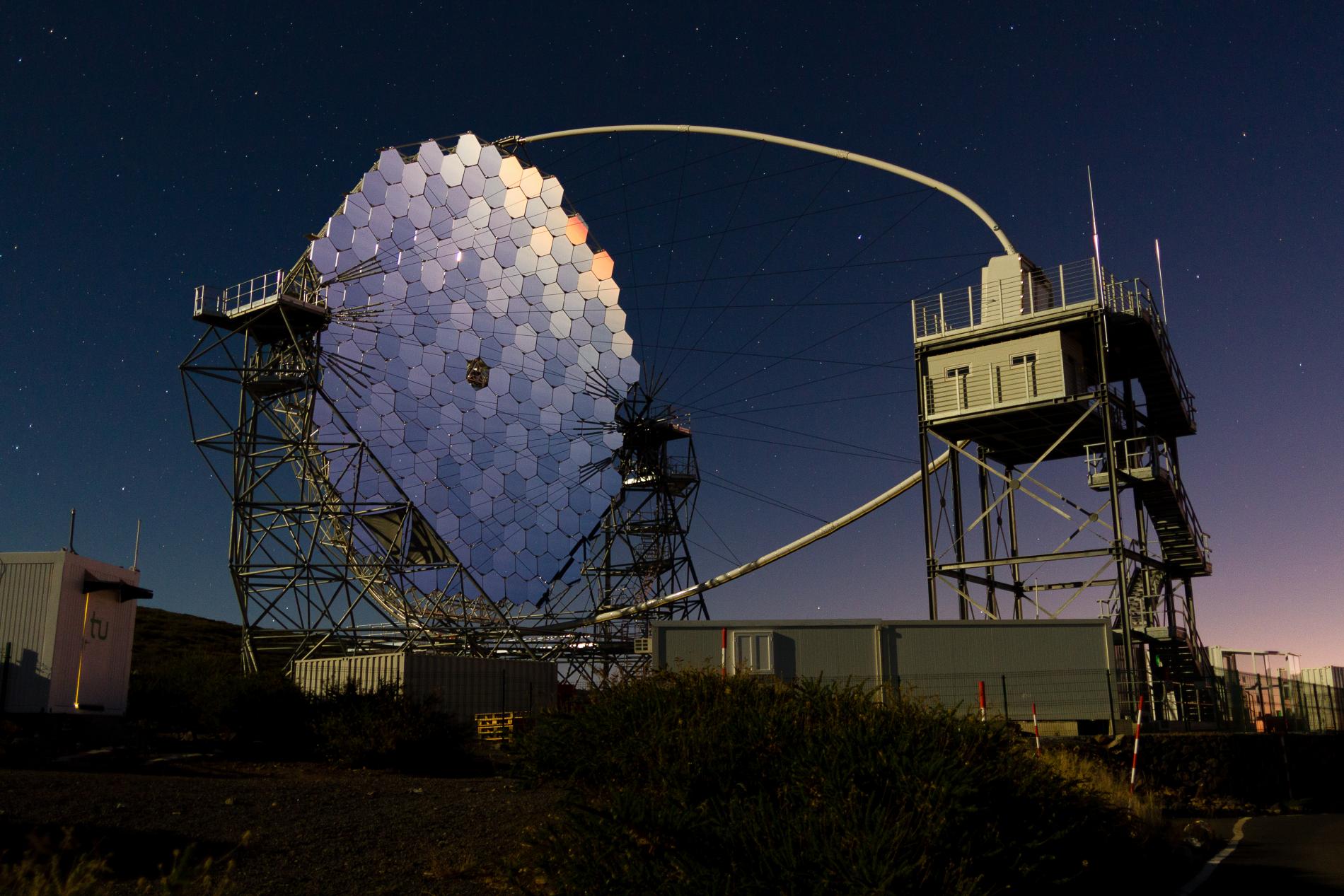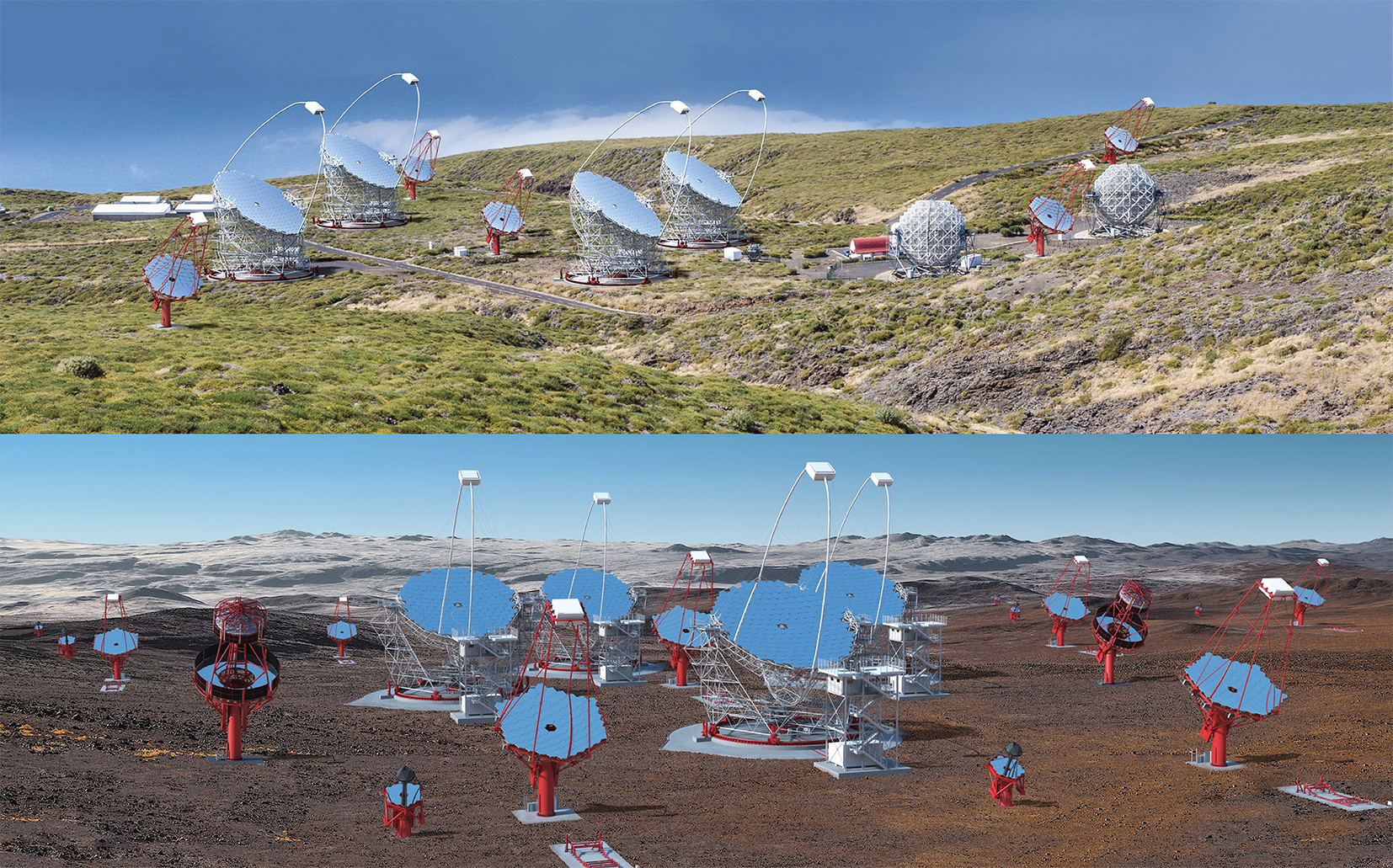Observations of the Crab Nebula confirm the outstanding performance of the first LST telescope at the CTA Observatory
With more than sixty telescopes located in both hemispheres, the CTA Observatory will be the leading gamma-ray observatory for the next decades. The Institute of Astrophysics of Andalusia (IAA-CSIC) participates in the project and in the article on the performance of the LST-1 telescope, a milestone in the project
The Cherenkov Telescope Array Observatory (CTAO) will be the leading astronomical observatory for very high-energy gamma rays for decades to come. Its scientific potential ranges from understanding the origin and role of relativistic cosmic particles to the search for dark matter. With more than sixty telescopes located in the northern and southern hemispheres (on the island of La Palma and in Chile), CTAO will be the first ground-based open gamma-ray observatory. Now, a paper confirms that the Large-Sized Telescope (LST-1) prototype meets the requirements to be part of what will be the world's most sensitive ground-based instrument for the detection of very high-energy gamma rays.
The study, carried out by the LST Collaboration, describes the capabilities of the telescope, including key parameters such as sensitivity, angular and energy resolution, and validates the simulations needed for data analysis. This paper is essential for forthcoming scientific publications, as it sets the benchmark for the instrument's performance and ensures the reliability of the analysis of its data.

"Simply put, this paper is a manual on how the telescope works: it shows its capabilities and limitations", explains Abelardo Moralejo, one of the coordinators of the LST-1 analysis software and author of the paper. "It allows us to assess possible systematic errors that could affect the interpretation of the data. Therefore, a thorough understanding of the telescope's performance, for which this work is an important step, ensures that the scientific results with LST-1 are reliable and reproducible”.
To assess the performance of LST-1, the LST Collaboration used data from observations of the Crab Nebula made from November 2020 to March 2022. The Crab Nebula is considered a calibration source in very-high-energy gamma-ray astronomy, as its luminosity is known to be stable at these energies. These observations also allowed the team to verify that the simulations needed for the science data analysis were correct.
"The analysis of the Crab Nebula data provides valuable information about its emission behaviour and its evolution with energy and time. By comparing the results with what we expect from the source as a standard candel, we can determine the sensitivity and accuracy of the instrument and correct our simulations, if necessary," says Rubén López-Coto, researcher at IAA-CSIC, another coordinator of the LST-1 analysis software and author of the paper. "The study shows that the telescope not only performs exceptionally well overall, as expected, but also closes the gap with other instruments at lower energy levels, thanks to its proven low-energy threshold”.
The low-energy threshold is a fundamental parameter of LSTs, as these telescopes are responsible for covering the CTAO's sensitivity at the lowest energies, detecting gamma rays down to 20 GeV. The study of the telescope's performance is complemented by observations of the Crab pulsar, the neutron star rotating at the centre of the Crab Nebula.
"Pulsars are very difficult sources to detect because of their weak signal", says Masahiro Teshima, principal investigator of the LST Collaboration. "LST-1 can detect the two pulses of the Crab pulsar in record time. This is not only a remarkable result, but also demonstrates the capabilities of LST-1 to detect faint sources at low energies".
"This paper is a milestone for CTAO and the international consortium associated with its design and construction (CTAC). It is the first such study for a telescope that will be part of the observatory, supporting years of work and planning for this instrument. It also points to a promising scientific future for CTAO as the world's most relevant facility for very-high-energy gamma-ray astrophysics in the coming decades", concludes Daniel Morcuende, researcher at the Instituto de Astrofísica de Andalucía and another of the authors of this work.

CTAO'S LARGE TELESCOPES
CTAO will explore the extreme universe from both hemispheres (in Paranal, Chile, and on the island of La Palma, in the Canary Islands) and will study from the closest environment of black holes to the low-density regions of the universe on a large scale. With an unprecedented ability to observe a huge range of photon energy - from 20 gigaelectronvolts (GeV) to 300 teraelectronvolts (TeV) - CTA will in every way improve the capabilities of current instruments.
To cover its large energy range, CTAO will need three classes of telescopes: Large-Sized Telescopes (LSTs), Medium-Sized Telescopes (MSTs), and Small-Sized Telescopes (SSTs). The LSTs, the protagonists of the recent work, are optimised for the low energy range of CTAO (from about 20 GeV). Lower-energy gamma rays require telescopes with large mirror surfaces capable of collecting the faint Cherenkov light from atmospheric particle cascades. The LSTs therefore consist of 198 mirrors, creating a reflecting surface of twenty-three metres in diameter and about four hundred square metres.
The LST prototype, LST-1, is the only telescope installed at a CTAO site, at CTAO-North. This enormous telescope, 23 meters in diameter, is 45 meters high and weighs around 100 tons. However, it is extremely agile, with the ability to reposition itself in just twenty seconds to capture brief, low-energy gamma-ray signals. Its rapid repositioning, as well as its low threshold energy, make the LST a key telescope for CTAO in the study of transient sources inside and outside our Galaxy, such as elusive gamma-ray bursts.
LST-1 was inaugurated in October 2018, captured its "first light" in December of that year, recorded its first gamma-ray signal from the Crab Nebula in November 2019, and detected the Pulsar in record time. del Cangrejo in June 2020.
CTA-LST Project Collaboration. "Observations of the Crab Nebula and Pulsar with the Large-Sized Telescope Prototype of the Cherenkov Telescope Array". The Astrophysical Journal, 2023. https://arxiv.org/abs/2306.12960
Observatorio CTA: https://www.cta-observatory.org/
Instituto de Astrofísica de Andalucía (IAA-CSIC)
Unidad de Divulgación y Comunicación
Silbia López de Lacalle - sll[arroba]iaa.es - 958230676
https://www.iaa.csic.es
https://divulgacion.iaa.csic.es

